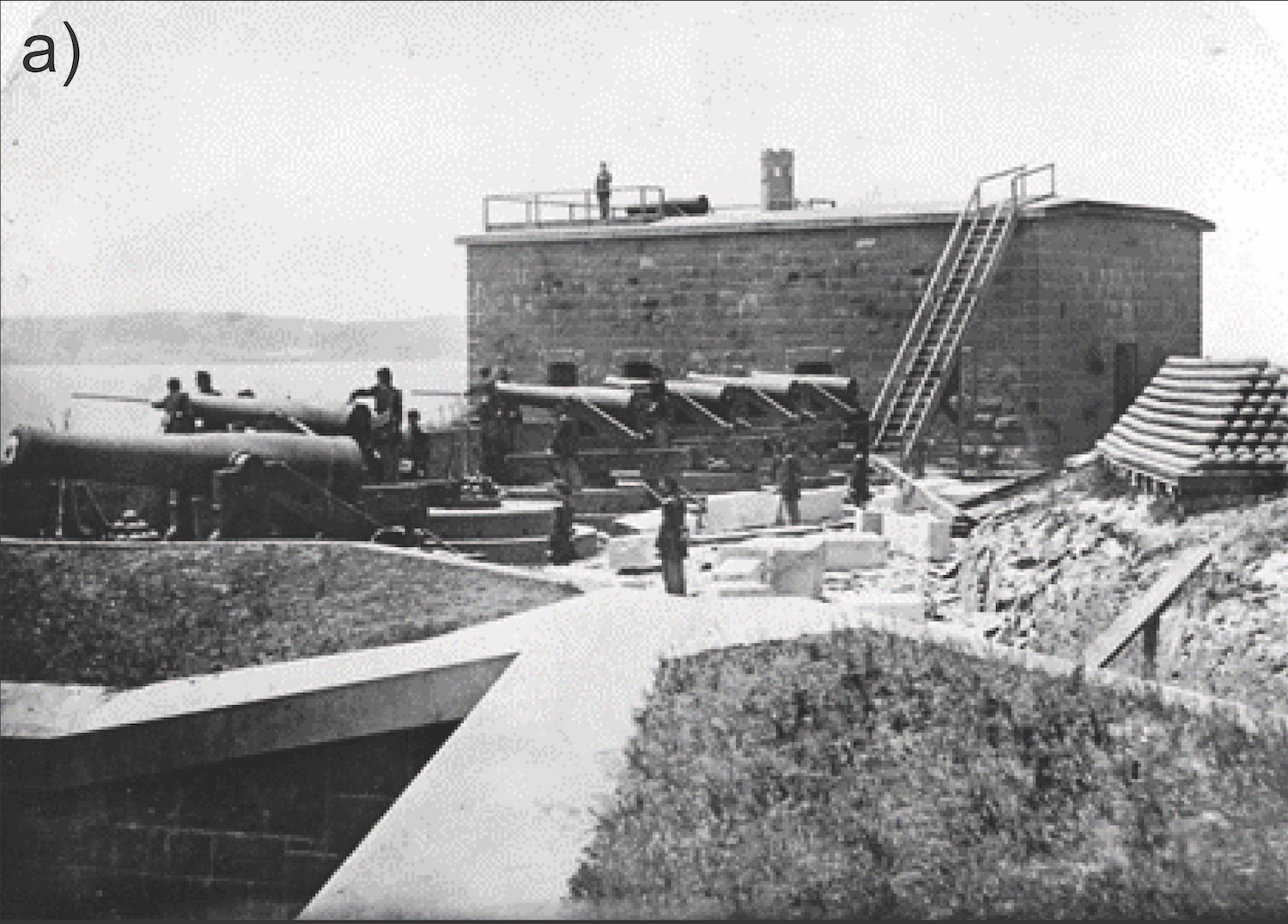Radar Reveals 19th-Century Military Fortifications Beneath Alcatraz
Researchers discovered the remains of the fortifications by using high-tech ground penetrating radar, they reported in a new study, published online Jan. 17 in the journal Near Surface Geophysics.
The researchers also used terrestrial laser scans (as opposed to lasers shot from planes or drones) and georectifications, a method that involves taking old digitized maps and linking them to a coordinate system so that they can be geolocated in 3D space, the researchers said. These techniques helped the team locate the historical remains underneath the penitentiary's recreational yard. [Photos: The Hidden Fortress Beneath Alcatraz]
One of the buried structures is a "bombproof" earthwork traverse (a tunnel going through a long mound), running east to west under the recreation yard. And it was in surprisingly good condition, according to the radar data.
"The remains of these historical archaeology features were just a few centimeters beneath the surface and they were miraculously and impeccably preserved," Binghamton University archaeologist Timothy de Smet said in a statement. "We also learned that some of the earthwork traverses were covered over with thin concrete layers through time, likely to decrease erosion on the rainy windy island."
While many people know about Alcatraz's history as a penitentiary, it's less well-known that the island once held 19th-century military fortifications. After the War of 1812, the United States began building coastal fortifications on its Eastern Seaboard to protect its major harbors, the researchers wrote in the study.
In the 1840s, U.S. Major Gen. John Charles Frémont purchased the rights to Alcatraz, which was seen at the time as a "barren uninhabitable rock without freshwater or topsoil known as either La Isla de los Alcatraces (Island of the Seabirds) or more colloquially as White Island, due to copious amounts of guano [bird poop] left behind by the eponymous seabirds," the researchers wrote in the study. Once California gained statehood in 1850, the U.S. began building military fortifications on Alcatraz in 1853 to protect San Francisco's harbor, the researchers reported.
The construction of these fortifications was a turning point from a historical military perspective, the researchers noted, as it marked the transition from earthen structures from the traditional brick-and-masonry structures that characterized earlier 19th-century coastal defenses.
Get the world’s most fascinating discoveries delivered straight to your inbox.
Today, Alcatraz penitentiary, built in 1908, is a National Historic Landmark. So, de Smet and his colleagues decided to use noninvasive methods to locate the buried military fortifications. "We did not know what to expect," he said. "We did not know if there would be any extant subsurface architecture of these historically significant remains, or, if there was anything left, what their extent and integrity would be like."
In fact, there's more to be analyzed. The researchers are now looking at terrestrial laser scans and ground-penetrating radar from the remnants of the former Citadel beneath the prison, he said.
"It was wonderful to find the history just beneath our feet that we can visualize for the public," de Smet said.
- 'Lost' Roads of Ancient Rome Discovered with 3D Laser Scanners
- Fight, Fight, Fight: The History of Human Aggression
- Images: Rare Footage of the Devastation of the 1906 San Francisco Earthquake
Originally published on Live Science.

Laura is the managing editor at Live Science. She also runs the archaeology section and the Life's Little Mysteries series. Her work has appeared in The New York Times, Scholastic, Popular Science and Spectrum, a site on autism research. She has won multiple awards from the Society of Professional Journalists and the Washington Newspaper Publishers Association for her reporting at a weekly newspaper near Seattle. Laura holds a bachelor's degree in English literature and psychology from Washington University in St. Louis and a master's degree in science writing from NYU.




